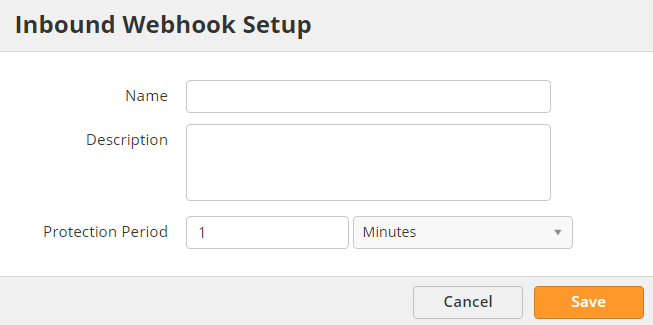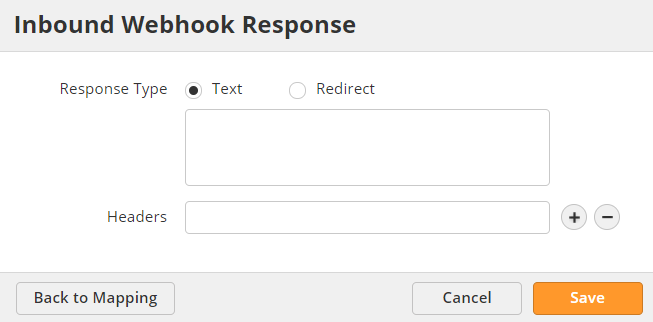...
To create an Inbound Webhook, navigate to Settings > App Setup > Webhooks and click the Inbound tab. Click the New button.
Give your webhook a name, description, and protection period. The protection period is the time in which the system will ignore duplicate webhooks. If you notice another service sending multiple of the same webhooks, adjust the protection period for to match your other system.
| Note | ||
|---|---|---|
| ||
If you are receiving many duplicate webhooks, it is possible that the other system is waiting for a response. If you set a response back from Lead Liaison, it may prevent the other system from resending. See the Adding a Response section below. |
You can send a Webhook with either a GET or POST command.
- GET – lookup data in Lead Liaison and return it to the service calling the Webhook.
- POST – send information to Lead Liaison to create or update a Prospect record. When using POST, you will also need to select a body type.
- Form – send form data. The system will create or update a Prospect connecting the parameter values to the mapped field.
- JSON – send data in a custom JSON template. When using this option, you will need to upload your JSON template to generate parameters.
Adding Parameters
To add parameters, specify the parameter name and type. Add and remove parameters with the plus and minus buttons to the right.
Instead of adding parameters manually, the system can also parse a test webhook. To parse a test webhook
- Click the Parse button
- Copy the endpoint URL (listener)
- Go into the program sending the test
- Send a test webhook to the provided endpoint URL
Once you send the test webhook, the system will automatically parse out the parameters from the test.
| Note | ||
|---|---|---|
| ||
Do not close the Automatic Parsing dialogue box while sending a test webhook. If you do, you will need to click the Parse button again, and the system will generate a new endpoint URL. |
Once you've added parameters, click Save to set the field mappings.
Select the webhook parameter on the left and the Lead Liaison field that it should fill on the right.
Adding a Response
You can add a response to Lead Liaison's webhook handler. A response lets the other system know that we successfully received the webhook. Responses are optional, but they may prevent the other system from attempting to resend a webhook, and the other system may rely on responses for reporting purposes.
Refer to your sending system's documentation to check what kind of response it takes. Once finished, click Save.



